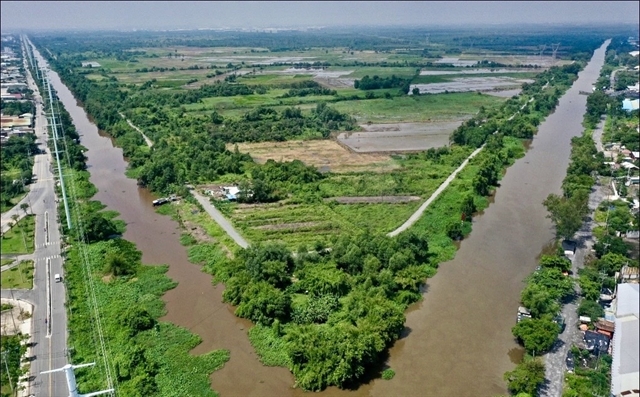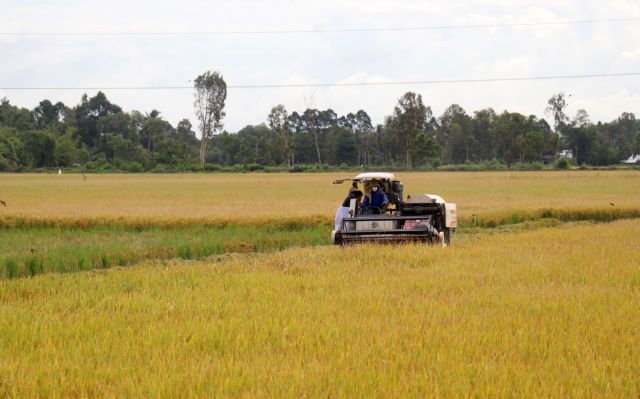 Society
Society

 |
| Rice fields in Kiên Giang Province’s Gò Quao District. – VNA/VNS Photo Lê Huy Hải |
CẦN THƠ – The southern region should prioritise rice varieties with high quality and yields for export in the upcoming winter-spring rice, Deputy Minister of Agriculture and Rural Development Lê Quốc Doanh has said.
Speaking at a seminar in Cần Thơ City last week, he said localities should properly structure the proportion of rice varieties such as speciality and fragrant ones to capitalise on local advantages.
Farmers should use advanced farming techniques to increase yields and reduce costs, he said.
They should sow the crop early, especially in the Cửu Long (Mekong) Delta’s coastal areas, to avoid the impacts of saltwater intrusion at the end of the crop, he said.
He instructed the Directorate of Water Resources and the ministry’s research agencies to closely monitor water resources and inform localities about forecasts so that they can proactively take measures to cope with possible water shortage and saltwater intrusion.
In the 2022 – 23 dry season intrusion of seawater is forecast to occur earlier and further.
The southern region is estimated to grow about 1.58 million hectares of the winter-spring rice, according to the Plant Cultivation Department.
The Cửu Long Delta, the country’s rice granary, will account for 1.5 million hectares.
Lê Thanh Tùng, deputy head of the Plant Cultivation Department, said in the delta’s coastal areas in Long An, Tiền Giang, Bến Tre and Trà Vinh provinces, 400,000ha should be sowed next month to avoid saltwater.
Elsewhere, the sowing should finish by the end of the year, he said.
Areas situated 20-30 km from the coast should grow salt-resistant rice varieties with a short maturity period of 90 days, and those 30-70km away should prioritise high-quality varieties of 90 – 105 days, he said.
The delta’s upstream areas should prioritise speciality and fragrant rice of 90 – 105 days, he added.
The department has encouraged farmers to grow high-quality and fragrant rice varieties such as Đài Thơm 8, OM 5451 and OM 18 to meet export demand.
In the ongoing autumn-winter rice crop, the delta has planted 700,000ha and expects a yield of 5.7 tonnes per hectare.
The increasing use of machinery and advanced farming techniques has helped reduce the quantity of seeds used.
Tùng said the key to reducing costs was bringing down the use of seeds to around 80 kilogrammes per hectare.
“When the quantity of seeds is reduced, the cost for fertilisers, pesticides and irrigation will reduce and farmers’ earnings will increase.”
In the autumn-winter crop, high-quality, fragrant and sticky varieties account for 80 per cent, helping increase farmers’ incomes and exports.
Việt Nam exported 4.38 million tonnes of rice worth nearly US$2.4 billion in the first eight months of the year, up 20.7 per cent and 9.9 per cent.
Nguyễn Ngọc Nam, chairman of the Việt Nam Food Association, said: “Việt Nam is likely to export 6.3-6.5 million tonnes of rice this year.”
The exports mostly go to Asian and African markets. – VNS




